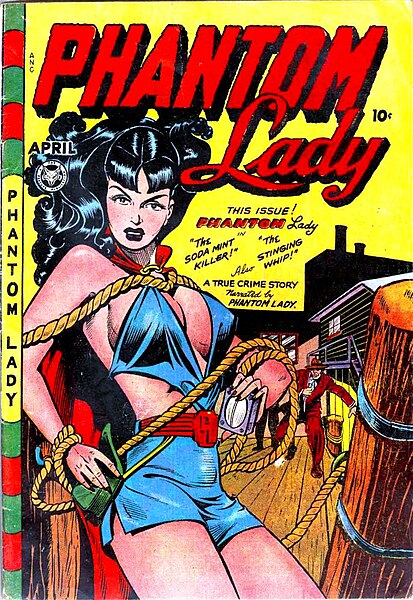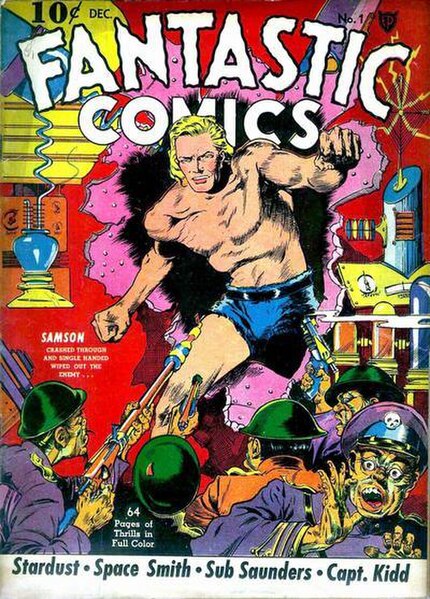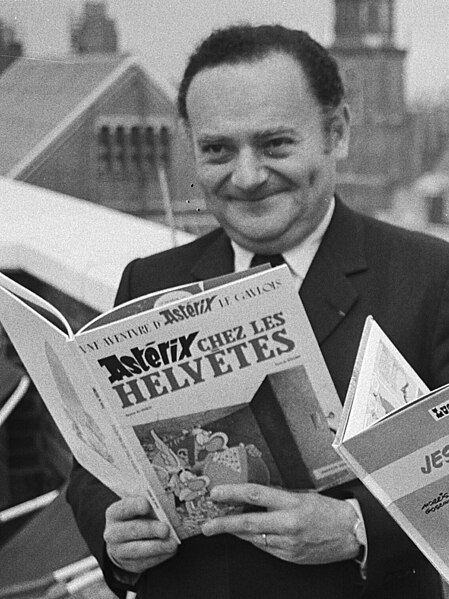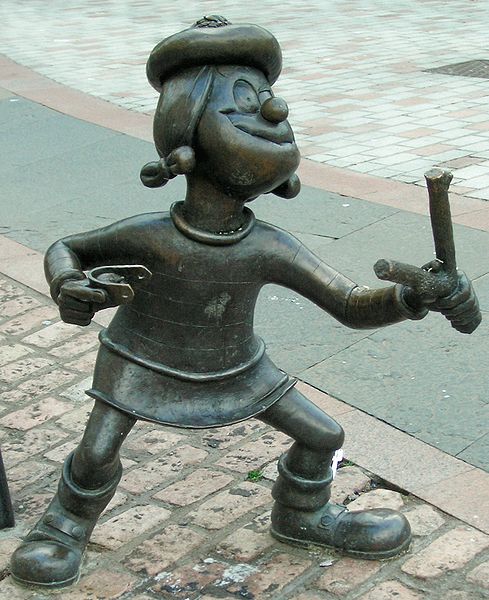Clarence Matthew Baker was an American comic book artist and illustrator, best known for drawing early comics heroines such as the costumed crimefighter Phantom Lady, and romance comics. Active in the 1940s and 1950s Golden Age of comic books, he is one of the first known African-American artists to find success in the comic-book industry. He also penciled St. John Publications' digest-sized "picture novel" It Rhymes with Lust (1950), the first graphic novel despite that term not having been coined at the time.
Baker (left) and publisher Archer St. John at Grauman's Chinese Theatre (undated)
Phantom Lady #17 (April 1948). This Baker cover appeared in the book Seduction of the Innocent.
Page from Fight Comics # 40, Oct. 1945, Fiction House.
A comic book, also called comicbook, comic magazine or simply comic, is a publication that consists of comics art in the form of sequential juxtaposed panels that represent individual scenes. Panels are often accompanied by descriptive prose and written narrative, usually, dialogue contained in word balloons emblematic of the comics art form.
Comic books on display at a museum, depicting how they would have been displayed at a rail station store in the first half of the 20th century.
A common comic-book cover format displays the issue number, date, price and publisher along with an illustration and cover copy which may include a story's title.
René Goscinny (1926–1977), writer of the Astérix comic book series.
Statue of Minnie the Minx, a character from The Beano, in Dundee, Scotland. Launched in 1938, The Beano is known for its anarchic humour, with Dennis the Menace appearing on the cover.







